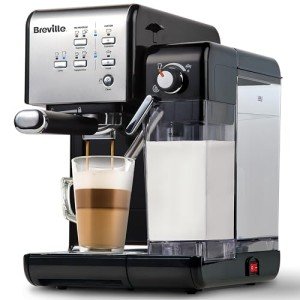How To Become A Prosperous Energy-Efficient Espresso Machines When You're Not Business-Savvy
Energy-Efficient Espresso Machines: A Comprehensive Guide
Worldwide of coffee enthusiasts, espresso machines are typically considered as important home appliances for brewing rich, fragrant coffee. However, the energy intake related to these machines can cause increased energy expenses and environmental concerns. As customers become more eco-conscious, energy-efficient espresso machines have actually become a popular option. This short article aims to explore the features, benefits, and choices readily available in energy-efficient espresso machines, assisting coffee fans make informed options.
What Makes an Espresso Machine Energy-Efficient?
Energy-efficient espresso machines are created to lessen energy intake while preserving optimal performance. Several functions add to the energy efficiency of these machines:
Insulation: High-quality insulation assists maintain heat, minimizing the energy required to preserve ideal brewing temperature levels.
Smart Technology: Many modern machines are equipped with programmable settings that allow users to set up brewing times and change to standby mode when not in use.
Quick Heat-up Time: Energy-efficient espresso machines frequently use innovative heating technologies, such as thermoblocks or PID controllers, to heat water quickly.
Low Wattage: Machines that operate at lower wattages consume less energy overall, making them more effective.
Automobile Shut-off: Automatic shut-off includes guarantee that the machine shuts off after a certain duration of lack of exercise, more reducing energy waste.
Advantages of Energy-Efficient Espresso Machines
Buying an energy-efficient espresso machine can offer several advantages:
Cost Savings: Over time, lower energy consumption can cause reduced electricity costs.
Environmental Impact: Using less energy reduces carbon footprints, making these machines a more sustainable option for environmentally conscious consumers.
Improved Performance: Many energy-efficient models also provide superior brewing technologies, resulting in better-tasting espresso.
Resilience: Typically, energy-efficient machines are constructed with high-quality parts, leading to greater longevity.
Functions to Consider
When selecting an energy-efficient espresso machine, a number of features must be taken into consideration:
- Type of Machine: Options consist of manual, semi-automatic, and fully automatic models, each with varying degrees of user control and automation.
- Brew Quality: Look for machines that use high-quality brewing systems to make sure ideal taste extraction.
- Maintenance: Some machines have self-cleaning features that can conserve energy and effort in maintenance.
- Capability: Depending on personal or family size, machine capacity can impact energy usage, with larger machines frequently needing more power.
Popular Energy-Efficient Espresso Machines
The market offers a range of energy-efficient espresso machines accommodating different needs and preferences. Below are some significant models:
Brand
Model
Key Features
Energy Consumption
Breville
Barista Express
Integrated grinder, PID temperature level control, quick heat-up.
Low
DeLonghi
EC155
Compact size, easy to use, durable build.
Moderate
Rancilio
Silvia
Sturdy design, outstanding temperature stability, and has a low environmental impact.
Moderate
Gaggia
Traditional
Dependable manual operation, resilient brass components, and efficient steaming ability.
Low
Jura
E8
Fully automatic, wise features, and a detachable brew group for easy cleansing.
Low
Tips for Optimal Energy Efficiency
Aside from selecting an energy-efficient design, consumers can embrace several practices to optimize energy effectiveness:
- Preheat: If your machine has a pre-heating function, use it to guarantee that the optimal temperature level is reached rapidly before brewing.
- Shut off After Use: Always turn off the machine after developing or make use of machines with auto shut-off functions.
- Regular Maintenance: Keep the machine well-maintained to ensure it operates efficiently and successfully.
FAQs About Energy-Efficient Espresso Machines
1. Are energy-efficient espresso machines more costly?
While the initial investment may be greater for energy-efficient designs, the long-term savings on electrical energy bills can offset the initial expense. Furthermore, Best Budget Espresso Machines -efficient machines featured advanced functions that enhance the developing experience.
2. How do I know if an espresso machine is energy-efficient?
Look for indications such as Energy Star certification, user reviews, and requirements relating to wattage and heat-up time. Machines with specific functions intended at minimizing energy usage are usually designed for much better effectiveness.
3. Can I use an energy-efficient espresso machine for other coffee designs?
Lots of energy-efficient espresso machines offer flexibility, enabling users to brew different coffee designs beyond espresso, such as lattes and coffees, by incorporating steaming capabilities.
4. Do energy-efficient models compromise quality for effectiveness?
Not always. Lots of energy-efficient espresso machines are equipped with high-quality developing innovation that can improve taste extraction while decreasing energy intake.
5. What maintenance is needed for energy-efficient espresso machines?
Regular maintenance involves cleaning up the machine, descaling when needed, and periodically examining seals and gaskets to ensure ideal efficiency and energy efficiency.
Energy-efficient espresso machines represent a perfect blend of performance, savings, and environmental responsibility. By thinking about various features, advantages, and brands, customers can pick a model that fits their distinct preferences while contributing favorably to the environment. As the trend towards sustainable living grows, the popularity of energy-efficient home appliances, including espresso machines, is most likely to continue its upward trajectory, offering coffee fans a guilt-free way to enjoy their daily dose of espresso.
